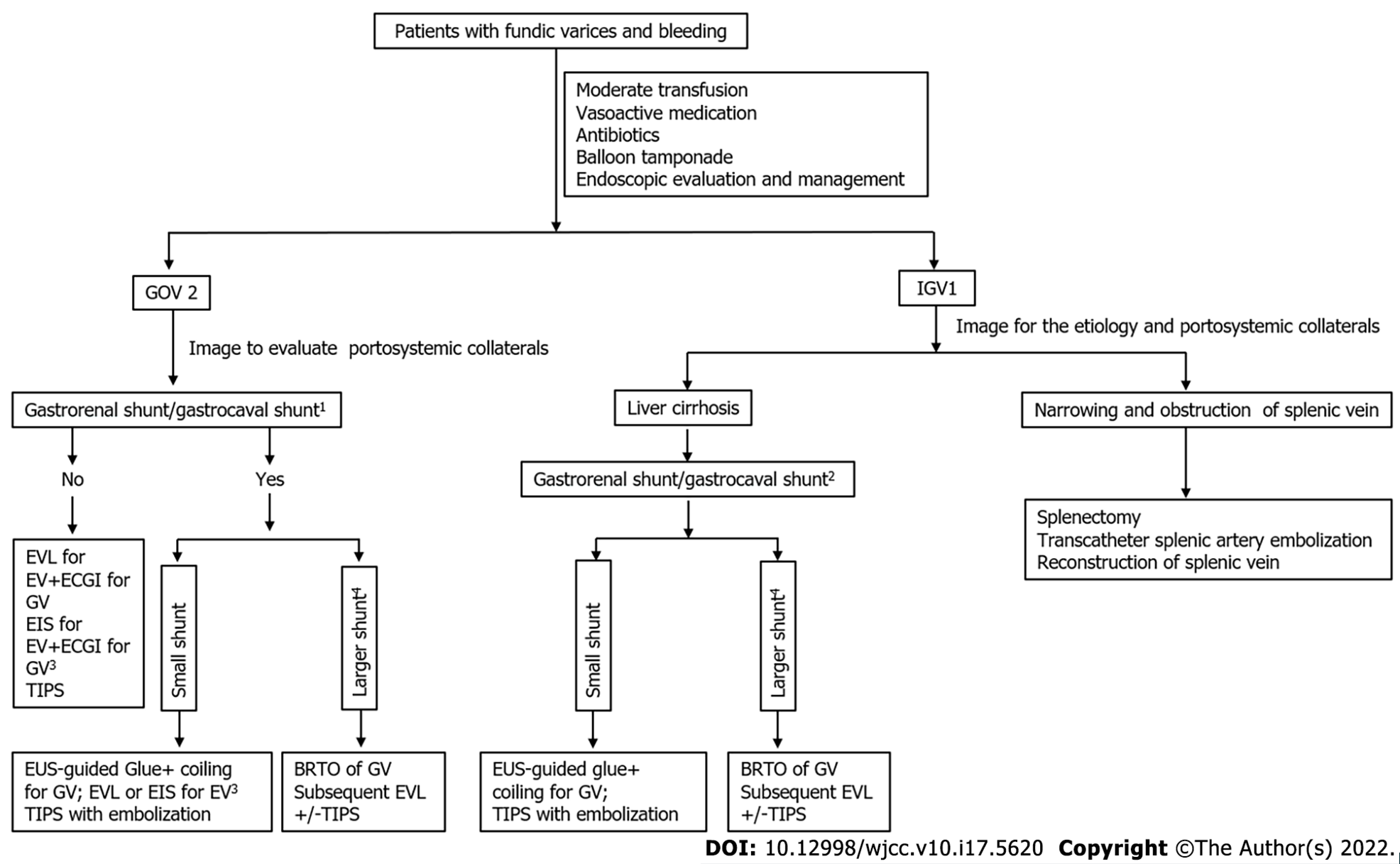Copyright
©The Author(s) 2022.
World J Clin Cases. Jun 16, 2022; 10(17): 5620-5633
Published online Jun 16, 2022. doi: 10.12998/wjcc.v10.i17.5620
Published online Jun 16, 2022. doi: 10.12998/wjcc.v10.i17.5620
Figure 3 treatment algorithm for gastric fundic varices.
1Gastro-renal shunt or gastrocaval shunt occurred frequently in gastroesophageal varices patients with small size of esophageal varices; 2Gastro-renal shunt or gastrocaval shunt were mainly found in isolated gastric varices patients caused by liver cirrhosis; 3Endo-scopic injection sclerosis should be performed when the size of esophageal varices is larger than 2 cm; 4Balloon-occluded retrograde transvenous obliteration should be considered in the patients with large gastrorenal shunts or gastrocaval shunt. GOV2: Gastroesophageal varices; IGV1: Isolated gastric varices; EVL: Endoscopic variceal ligation; EV: Esophageal varices; ECGI: Endoscopic cyanoacrylate glue injection; GV: Gastric varices; TIPS: Transjugular intrahepatic portosystemic shunt; EUS: Endoscopic ultrasound; EIS: Endoscopic injection sclerosis; BRTO: Balloon-occluded retrograde transvenous obliteration.
- Citation: Song YH, Xiang HY, Si KK, Wang ZH, Zhang Y, Liu C, Xu KS, Li X. Difference between type 2 gastroesophageal varices and isolated fundic varices in clinical profiles and portosystemic collaterals. World J Clin Cases 2022; 10(17): 5620-5633
- URL: https://www.wjgnet.com/2307-8960/full/v10/i17/5620.htm
- DOI: https://dx.doi.org/10.12998/wjcc.v10.i17.5620









